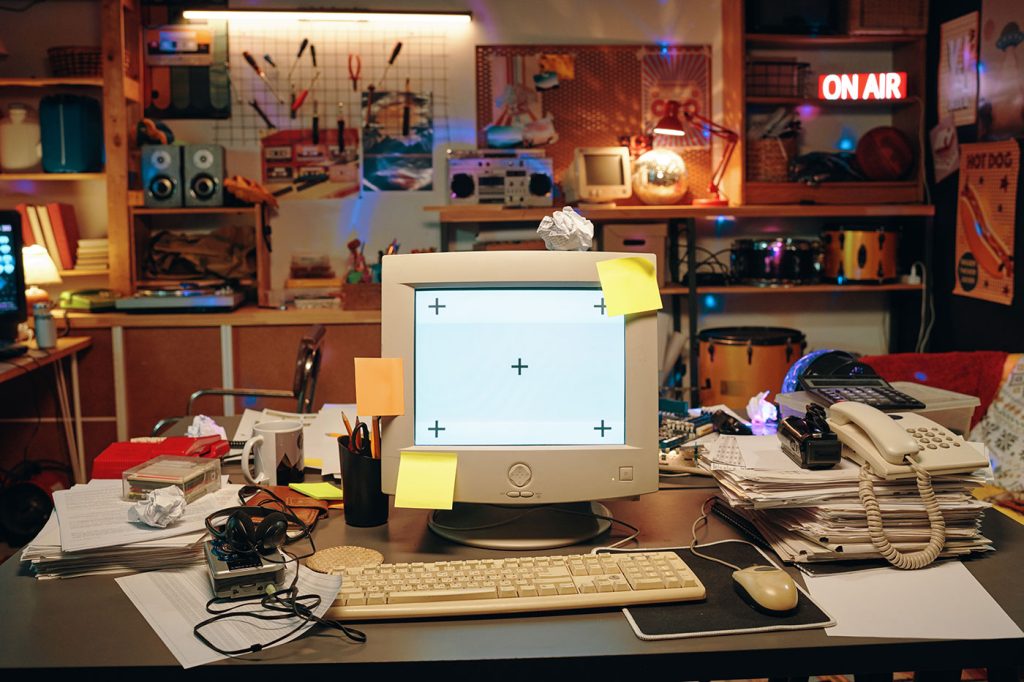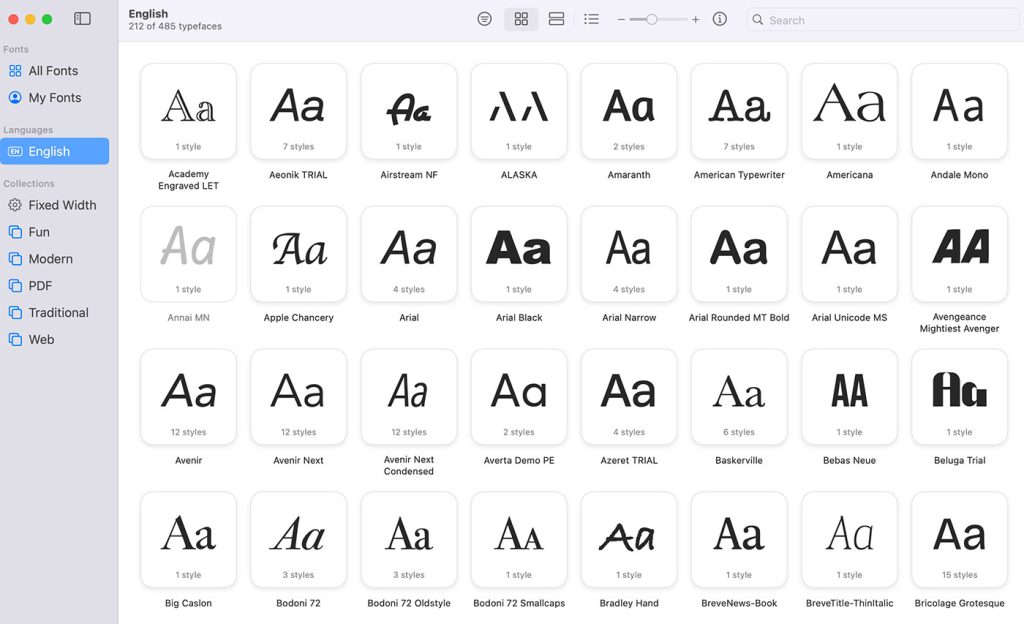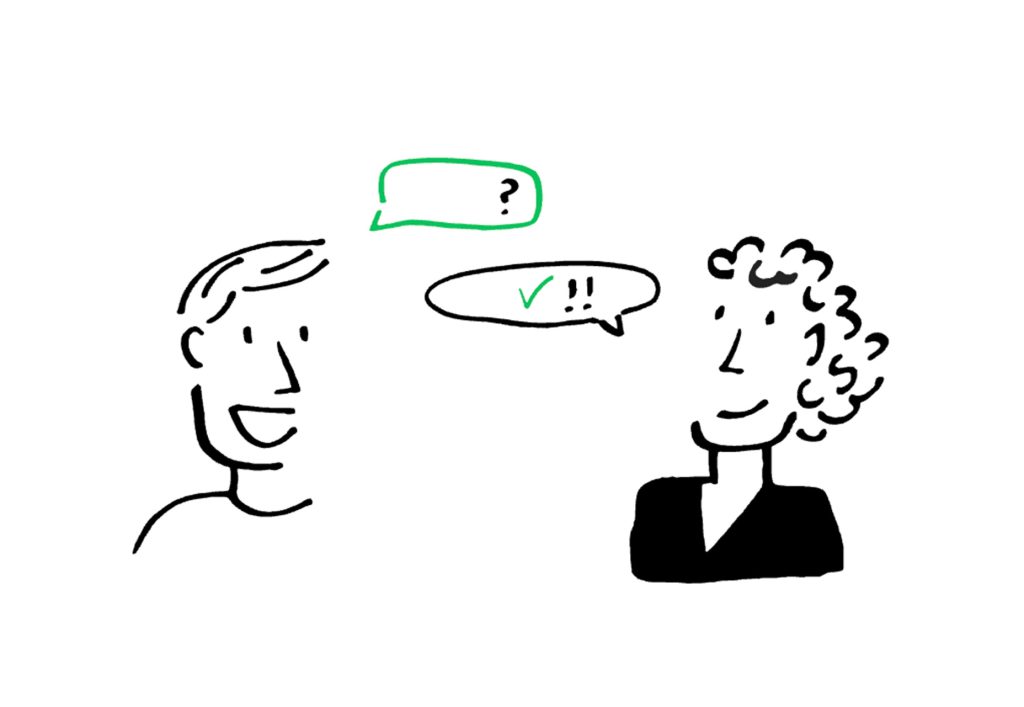Web design has always lived at the intersection of creativity and technology. It’s a practice that’s evolved not just in response to technical advancements, but alongside shifts in culture, taste, and user expectations. As we now stand on the edge of the AI era, the transformation is accelerating.
Let’s dive deep — not just into the aesthetics, but into the philosophy of web design: where it started, how it evolved, and where it’s hurtling next.
The Static Years: HTML Tables and Pixel Perfection
In the early 90s, web design was essentially glorified typesetting. Pages were structured with HTML tables. Designers would slice up images into grids to simulate layouts. CSS was still a whisper on the wind.
Aesthetic sensibilities were… let’s say “experimental.” Blinking text, garish background images, under-construction GIFs, and color schemes straight out of a lava lamp factory were the norm.
Tools? Primitive. Most web designers hacked away in Notepad or used basic WYSIWYG tools like Microsoft FrontPage. Later, Macromedia Dreamweaver revolutionized the workflow, allowing designers to visually arrange elements.
And then there was Adobe Flash. With Flash, designers suddenly had an expansive toolkit: animation, typography control, and interactivity beyond the wildest dreams of static HTML. Entire websites became immersive, animated experiences — until bandwidth limitations and lack of accessibility eventually triggered Flash’s decline.
For designers focused on graphics and digital artistry, Wacom tablets became an essential part of the toolkit. Offering precision far beyond a mouse, Wacom’s pressure-sensitive pens allowed for detailed illustration, freehand drawing, and fine-grained control over digital artwork.
These tools bridged the gap between traditional artistry and digital design, elevating web aesthetics beyond rigid grids and pixel art.
The Rise of Standards: CSS and the Semantic Web
As the web matured, so did its users. People wanted faster load times, better readability, and—imagine this—websites that worked on more than one browser.
Enter CSS. Now designers could separate style from structure, enabling cleaner, faster, and more maintainable code.
Semantic HTML encouraged better organization and accessibility. This era also birthed the first serious conversations around usability and user experience (UX). Designers like Jakob Nielsen championed “web usability” — arguing that good design was less about dazzling graphics and more about clarity and ease of use.
Gradually, table-based layouts gave way to CSS box models. Grid systems and wireframes became standard practice. Color palettes softened. Fonts became legible. Design matured from “decoration” into “communication.”
The Mobile Revolution: Responsive Design and Beyond
Then came the iPhone.
Suddenly, the web had to shrink. Websites designed for 1024-pixel-wide monitors looked ridiculous on a 320-pixel mobile screen.
Responsive web design emerged as the solution, pioneered by Ethan Marcotte. Using flexible grids, fluid images, and media queries, designers could craft websites that adapted seamlessly across devices.
Mobile-first design flipped priorities: touch interfaces, vertical scrolling, and concise content became king. Performance optimization became essential, as slow-loading sites would hemorrhage mobile users.
Flat design took hold, led by Microsoft’s Metro UI and later Apple’s iOS 7 redesign. Skeuomorphic textures were out; clean, minimalist aesthetics were in.
The Design System Era
As websites grew into complex, sprawling applications, the chaos threatened to return.
Design systems emerged as a way to rein things in. Atomic design principles, popularized by Brad Frost, broke interfaces into reusable components: buttons, cards, navbars, modals.
Companies like Google (with Material Design) and IBM (with Carbon Design System) established unified languages for colors, typography, spacing, and interactions.
Tools like Figma, Sketch, and Adobe XD replaced Photoshop for interface design. Collaboration became real-time. Designers and developers began to speak a common language, sometimes even working from the same files.
The gap between “designer” and “developer” narrowed.
Where We Are Now: Microinteractions, Accessibility, and Ethical Design
Today’s web design is more holistic.
Designers obsess over microinteractions: subtle animations that guide and delight users. Accessibility is (finally) being taken seriously, with guidelines like WCAG (Web Content Accessibility Guidelines) shaping best practices.
There’s a growing awareness of ethical design — thinking about dark patterns, user addiction, and privacy concerns.
Aesthetically, we’re seeing a resurgence of bold typography, immersive visuals (hello, 3D and VR elements), and a rejection of cookie-cutter templates in favor of more authentic, branded experiences.
But this is all about to change. Again.
The AI Horizon: Web Design Meets Machine Intelligence
AI isn’t creeping into web design — it’s crashing through the front door.
AI-Generated Layouts and Visuals
Tools like Uizard, Figma AI, and Galileo AI are already letting designers generate layouts and interfaces from simple prompts.
Need a landing page for a fintech app? Type a sentence, and AI will spin up a working prototype complete with hero sections, feature grids, and call-to-action buttons.
As models improve, they’ll learn your brand’s style guide, your preferred color palettes, even your “vibe.” Designers will go from pixel-pushers to design directors, curating and refining AI-generated options.
Hyper-Personalization
AI can create bespoke experiences for every user.
Imagine a homepage that reconfigures itself in real-time based on your browsing habits, location, or even mood. Typography adjusts for readability, color schemes shift for contrast, content prioritizes what you’re likely to care about most.
It’s personalization at a level that would be impossible for human designers to craft manually.
Conversational Interfaces and Voice-First Design
Voice UI and conversational design are expanding the designer’s toolkit.
How do you “design” a chatbot experience? How do you “style” a voice response?
As more interactions move beyond screens — into AR, VR, and ambient computing — web designers will need to think spatially, sonically, and contextually.
Ethics and AI in Design
With great power comes… terrifying responsibility.
Bias in AI-generated design could marginalize users. Hyper-personalization could slide into manipulation. Data collection could erode privacy.
Web designers will be on the frontlines of these ethical battles. They’ll need to audit AI outputs for fairness, ensure accessibility isn’t compromised, and advocate for user-first principles.
The New Web Designer
Tomorrow’s web designer will be:
- Prompt engineers: Crafting nuanced instructions for AI systems.
- Curators: Selecting and fine-tuning AI-generated design options.
- Experience architects: Designing across screens, voices, and spaces.
- Ethicists: Embedding accessibility, privacy, and inclusivity into every decision.
And perhaps most importantly: adaptable, endlessly curious, and human-centered.
In Closing
Web design has never stood still. From pixelated table layouts to responsive grids to AI-driven personalization, it’s a field that constantly reinvents itself.
The future won’t see web designers replaced by AI; it will see them augmented by it. Freed from the grunt work, they’ll have more room to do what humans do best: dream, empathize, create.
The next chapter of web design isn’t a handover to machines.
It’s a collaboration.
And it’s just getting started.






